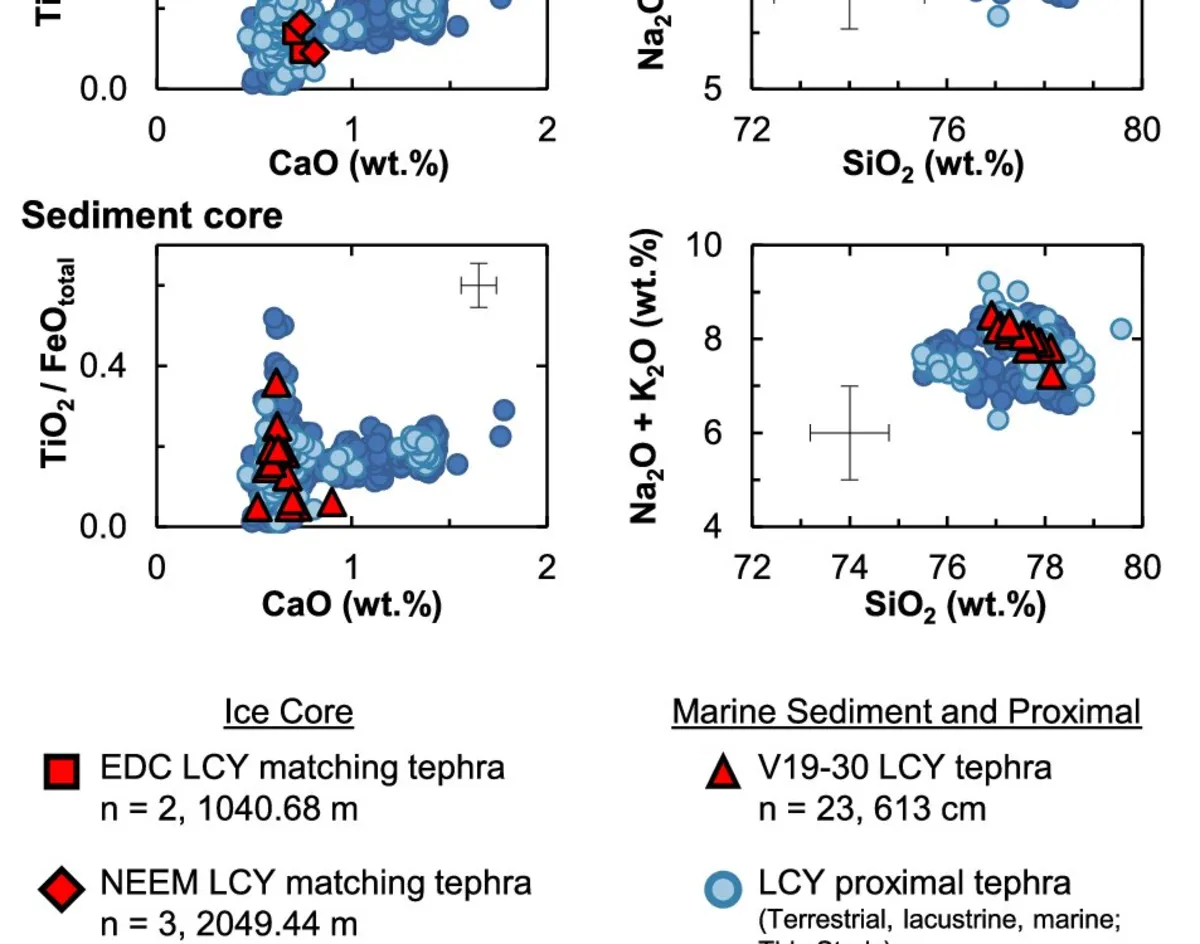
An international team of Earth and life scientists, hydrologists, chemists, and physicists has made a groundbreaking discovery regarding the Los Chocoyos supereruption, which is estimated to have occurred approximately 79,500 years ago. Their findings, published in the journal Communications Earth & Environment, provide new insights into how the planet recovered from the eruption's chilling effects within just a few decades.
Prior research has established that a massive volcanic eruption occurred in what is now Guatemala's Atitlán volcanic system tens of thousands of years ago, sending ash high into the atmosphere. This event, known as the Los Chocoyos supereruption, was believed to have contributed to a significant ice age due to the vast amounts of ash released into the atmosphere. The research team sought to understand the global ramifications of this ancient eruption by examining ice core samples from Greenland and Antarctica.
By studying the ice core samples, the researchers were able to determine the atmospheric conditions during and after the eruption. They found that the ash from the Los Chocoyos supereruption reached the locations of the ice cores approximately 79,500 years ago. The study revealed that the eruption was catastrophic, resulting in widespread global changes including cooling and a reduction in sunlight.
Interestingly, the research also indicated that the ash cloud dissipated relatively quickly, allowing the Earth to return to its normal climatic conditions within just a few decades. This rapid recovery challenges previous theories that suggested such supereruptions could lead to prolonged ice ages. The team's findings imply that future supereruptions may not necessarily trigger the same catastrophic climate events that were once feared.
The researchers assert that their work fundamentally alters the understanding of the Los Chocoyos supereruption and raises questions about the potential consequences of future supereruptions. Their findings suggest that fears of a new ice age following such volcanic events may be overstated. The team plans to continue their research by investigating the impacts of other supereruptions throughout history to better predict the potential effects of future volcanic activity.
In summary, the latest research sheds light on the Los Chocoyos supereruption and its relatively short-term impact on global climate, offering a new perspective on how the Earth can bounce back from catastrophic events.